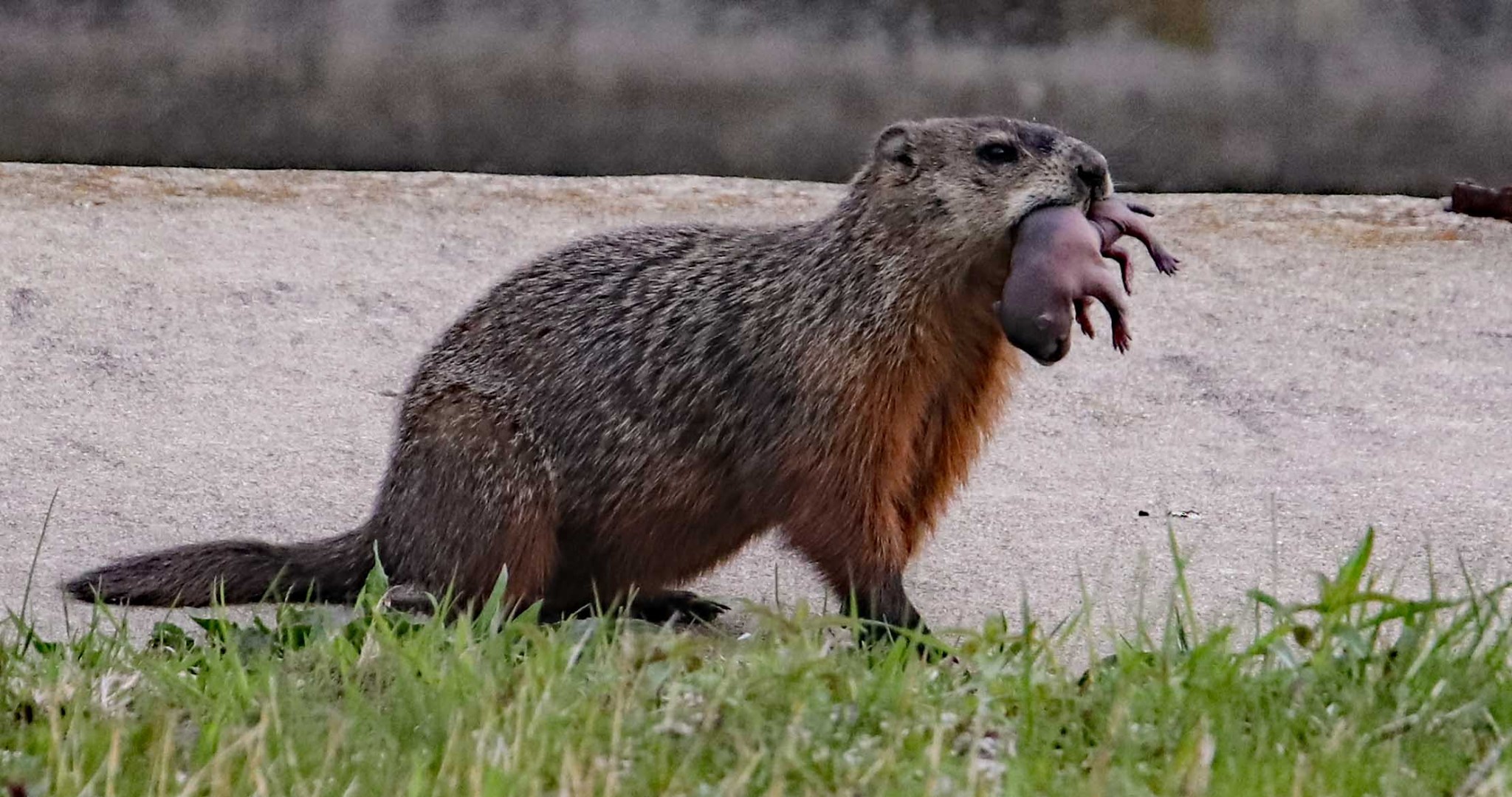(Photo by Glenn P. Knoblock)
Woodchucks’ burrowing behavior can become problematic around our homes and gardens, and they are known to occasionally cause damage to field crops and orchard fruits as well.
If woodchucks are getting into your garden or an area planted with fruit trees or ornamental shrubs, you may want to install a fence to keep them away. Because groundhogs are good at climbing, a fence should be at least 3 feet tall, and the top of the fence should be angled at 45 degrees to prevent them from climbing over, according to Wildlife Illinois. It’s also important to deter them from digging under a fence by installing poultry wire or welded wire at least 12 inches to 14 inches under the fence line and bending the bottom 2 inches to 4 inches of the fence at a 90 degree angle away from the fence line.
No repellents or toxicants have been approved for use to control woodchucks in Illinois, and you cannot use fumigants of any kind to remove an animal from your property without a permit from the Illinois Department of Natural Resources (IDNR). It’s important to also note that often the use of toxins is non-discriminant, meaning that they can harm other animals, including pets.
If animals on your property continue to cause damage after corrective measures have been taken, consider humanely removing and relocating them only as a last resort. Woodchucks are protected as a game animal in Illinois, and trapping them to remove them from your property requires a permit from IDNR. If you do not want to remove it yourself, contact a licensed wildlife control operator to contract their services.
All wildlife in Illinois are under the jurisdiction of the Illinois Department of Natural Resources. The Forest Preserve District of Will County does not treat, rescue or remove wildlife from public or private property. Both the Illinois Department of Natural Resources and Wildlife Illinois maintain lists of wildlife rehabilitators you can contact for assistance with injured wildlife.
(Photos via Shutterstock)

)
)
)
)